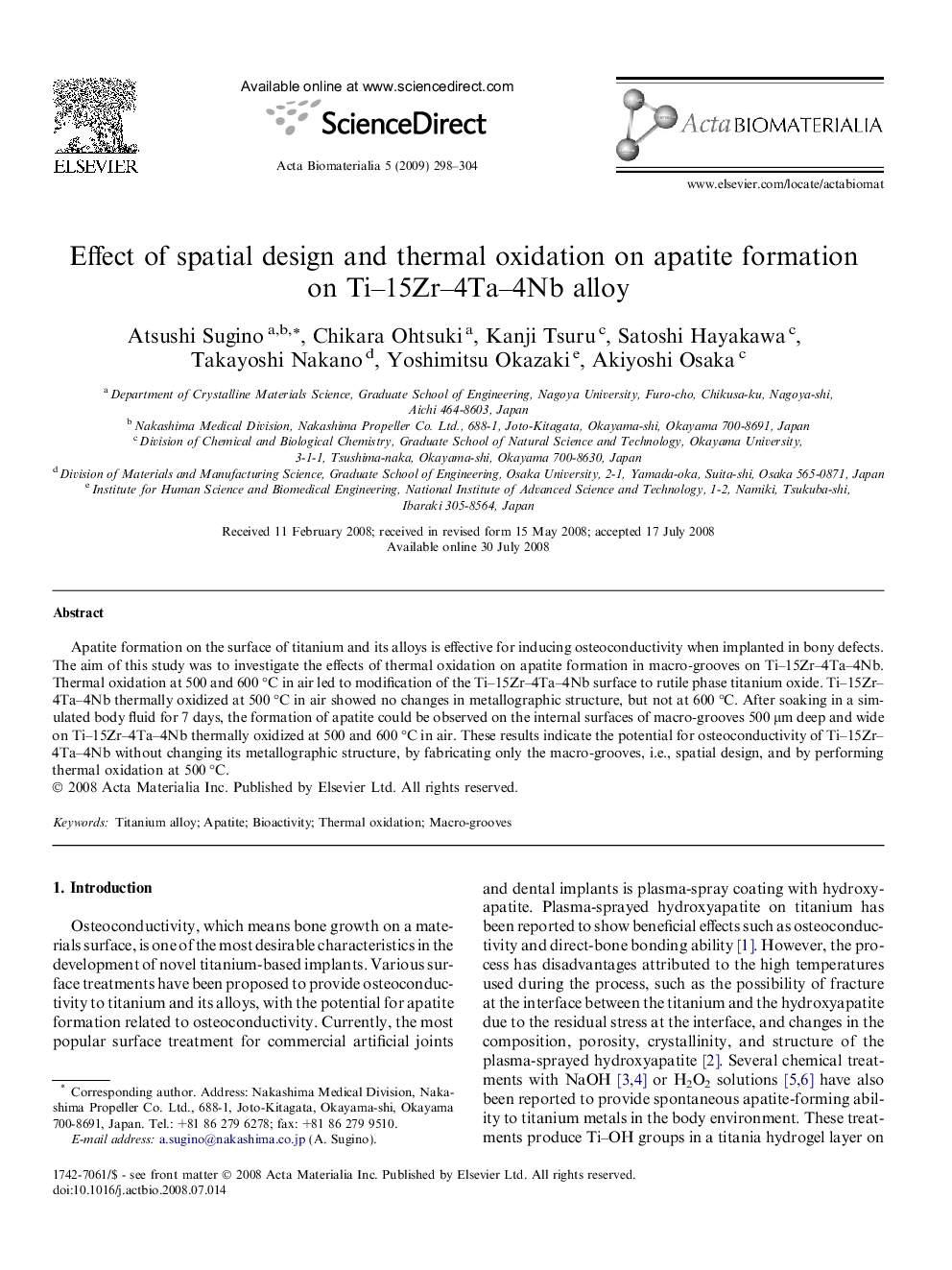| Article ID | Journal | Published Year | Pages | File Type |
|---|---|---|---|---|
| 2369 | Acta Biomaterialia | 2009 | 7 Pages |
Apatite formation on the surface of titanium and its alloys is effective for inducing osteoconductivity when implanted in bony defects. The aim of this study was to investigate the effects of thermal oxidation on apatite formation in macro-grooves on Ti–15Zr–4Ta–4Nb. Thermal oxidation at 500 and 600 °C in air led to modification of the Ti–15Zr–4Ta–4Nb surface to rutile phase titanium oxide. Ti–15Zr–4Ta–4Nb thermally oxidized at 500 °C in air showed no changes in metallographic structure, but not at 600 °C. After soaking in a simulated body fluid for 7 days, the formation of apatite could be observed on the internal surfaces of macro-grooves 500 μm deep and wide on Ti–15Zr–4Ta–4Nb thermally oxidized at 500 and 600 °C in air. These results indicate the potential for osteoconductivity of Ti–15Zr–4Ta–4Nb without changing its metallographic structure, by fabricating only the macro-grooves, i.e., spatial design, and by performing thermal oxidation at 500 °C.
